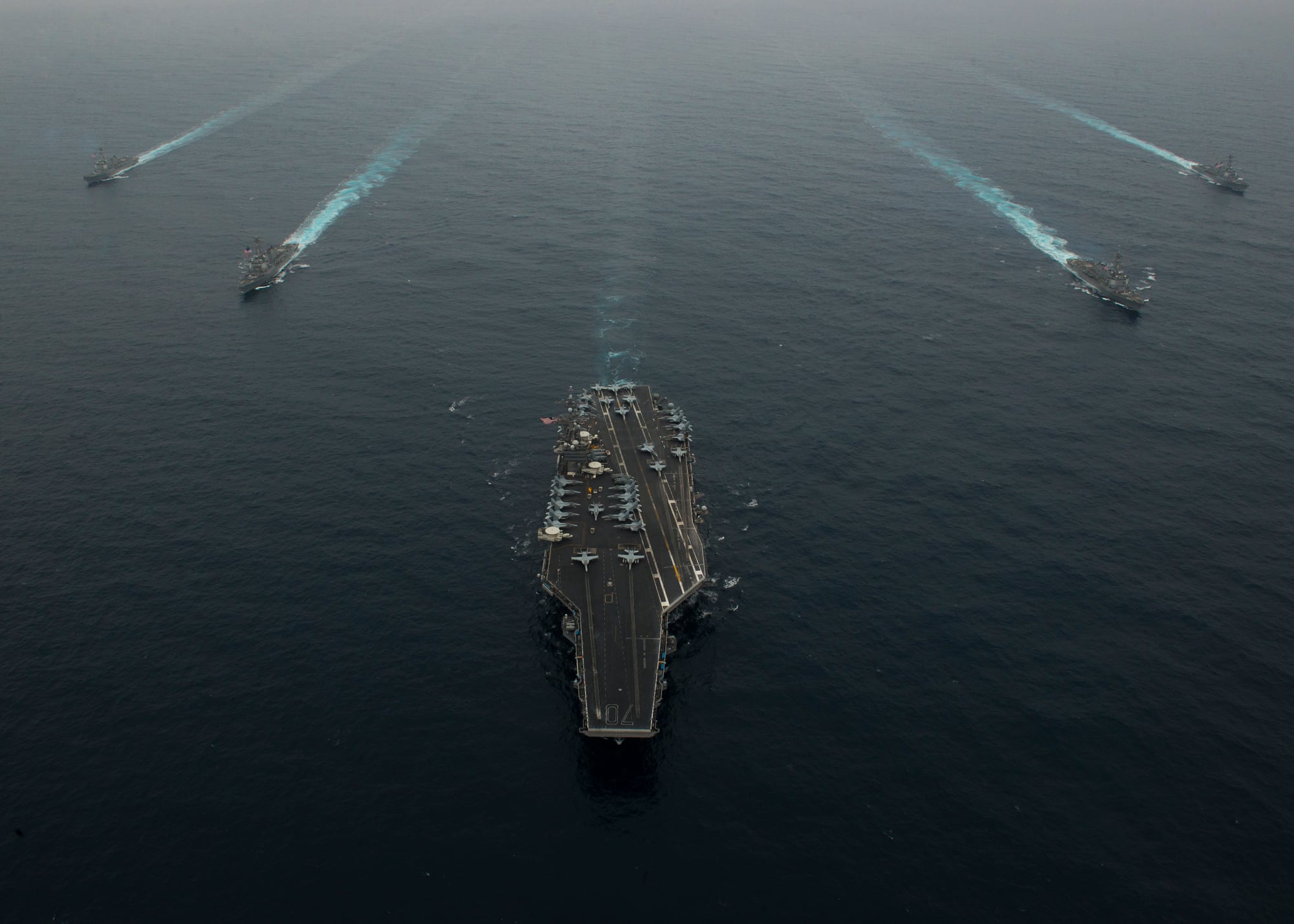The Navy wants 355 ships but budget trends raise questions about whether it could even afford to operate and maintain a fleet of that size, an influential defense budget analyst said Thursday.
Since 1997, the cost of operating and maintaining a shrinking fleet has skyrocketed, said Todd Harrison, a budget guru with the Center for Strategic and International Studies.
A new report co-authored by CSIS researcher Seamus Daniels that analyzes the 2018 budget submission shows that between the peak defense budget year, 1987, and 1997, the number of ships declined by 40 percent and the budget fell by about 35 percent. But between 1997 and 2015, the size of the fleet shrank another 20 percent, but the base budget grew by nearly 50 percent.
“So now the Navy wants to grow to 355 ships, that puts the Navy roughly at the level it was in FY-97, and the question is: is that affordable?” Harrison said in a round-table with reporters. “Even once we acquire all the platforms, can we afford to operate and sustain them given these trends? Especially if these trends continue, the operations and support costs are going to eat the budget alive.”
RELATED

Harrison’s report outlined a similar concern for the other services. For example, the Army’s 2018 budget request would put funding levels for the service back at 1992 levels, but for a force that’s 24 percent smaller than it was at the end of the Cold War.
Harrison puts the blame on rising personnel costs and a ballooning operations and maintenance budget. O&M, in addition to maintaining hardware and paying for deployments, also pays for civilian workers in shipyards and maintenance depots, and for military health-care costs that are notoriously hard to contain.
Maintaining old equipment still in use after 16 years of war is becoming more and more expensive, and the kicker is that the equipment that’s coming online is even more expensive to maintain and operate than the old equipment it’s replacing.
Harrison said he’s waiting for more details on how the administration plans to pay for growing the force when their forthcoming defense strategy documents are released, though he concurred with testimony from Defense Secretary Jim Mattis that it will likely take between 3 and 5 percent growth over inflation to grown and sustain the force Trump said he wants.
“It’s one thing to campaign on 355 ships, 540,000 in the active Army and 1,200 active fighters in the Air Force — I think they are going to have to flesh that out more,” he said.
Death spiral
If Congress and the military don’t correct course, they could face a readiness and force structure “death spiral,” where increasing costs and over-committed forces could cause the military to collapse under its own weight.
“What happens is you have higher operations and sustainment costs in your force, and that then means you can only afford a smaller force,” he explained.
“And when you have a smaller force and you have the same operational demands that means a higher operations tempo and more stress on your forces. Which then drives your operations and sustainment costs even higher, which then leads you to reduce the size of your force even more, which can get you into a death spiral.”
Harrison pointed to the recent collisions in 7th Fleet as anecdotal evidence that over-commitment was already having a real impact on the force.
“If you’re reading between the lines in these reports that have come out about these accidents, clearly they didn’t have the proper training to operate their equipment,” he said “Why didn’t they have the proper training? It looks like it was because of the op-tempo.
“They were out to sea, doing real-world operations so much that they didn’t dedicate enough time for training. And there is evidence of that across all our services.”
The military will have to either find significant savings through more efficient spending (which has been tried and has failed repeatedly) or cut back on global commitments stressing the force, Harrison said.
David B. Larter was the naval warfare reporter for Defense News.








